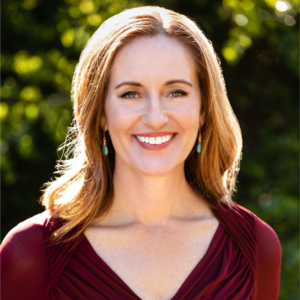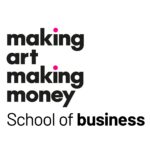When Do You Need To Develop A New Body Of Work?
When Do You Need To Develop A New Body Of Work?
(Transcription)
Ann Rea (00:00):
Hey, hello everyone. This is Ann Ray coming to you from San Francisco, California. I’m a fine artist, just like you. I’m also the creator of the making art making money program. And today I want to talk about this whole notion or idea that you have to develop a new body of work. So for example, a lot of artists are unable to take their art sales to the next level. So their default solution, and this is what they’re told by the artists. Publishment is don’t you worry your pretty little head about money, honey. You need to go and develop a new body of work. Well, let me tell you that is just not true. So why are you told, or do you have this understanding? Not everybody here, but some of you, why do you think you have to go develop a new body of work? So for example, let’s say you made pies and your pies were delicious with this and you, but you, you want to sell them, right?
Ann Rea (00:58):
You don’t have enough customers with a solution then be to make more pies, use more material, more energy, more supplies. No, no, not the solution. So if you got a bunch of pies, it’s not a pie problem, it’s a customer problem. It’s and knowing your niche problem. And what does that mean? A lot of artists have a lot of misunderstanding about knowing their niche. So please let me break it down. Knowing your niche means, you know, three things, you know exactly who wants to buy your art. Number one, you know, who wants to buy it and you know exactly where to go find more people just like them. And if you don’t know your niche, you are going to struggle and you’re going to fail. Let me just say that again. If you are a fine artist and you do not know your niche, you are going to struggle and you were going to fail, but the word is so misunderstood.
Ann Rea (01:55):
A lot of artists think it has to do with them, their creative medium it’s got to do with their genre. So they’ll spend their time trying to fix that by what, creating a new body of work. I will tell you, when I moved to San Francisco to become a full-time artist, I didn’t have a body of work. I didn’t have a body of work at all. I did have an established point of view as an artist. I had established sales, but I didn’t have clarity around my niche. When I found that I was able to take my sales up several levels. So when I started as a full-time artist in San Francisco, way back when I did not know my niche and that I did, but I spent that year, that first year, determining my niche and testing my niche and in the process of testing it and determining it, I sold $103,246 of my art.
Ann Rea (02:53):
So if you have soldier art and you’re struggling to take it to the next level, creating a new body of work is not that the fix it’s finding your niche. So if you want to learn and about more about this, I’m offering a free five day challenge where it’s, you will, it’s all about how to find your next collector quickly. It’s also how to, it’s also going to teach you how the hell do you find your niche. We’re going to break that down into four clear steps. So I invite you to apply. There’s a link below in the comments. And I just want to check my notes. I want to make sure that I give you everything that I was thinking about when it comes to this little mini lesson. So first of all, understand that the mandate to create a whole body, a whole new body of work is coming from your representatives.
Ann Rea (03:44):
Your art gallery, for example, is maybe asking you for a new body of work to show. There’s no guarantee you’re going to show that work. Now, why do they want you to do that? Well, first of all, they want you to get the hell out of the way, because what they don’t want you to know is that the affluent would prefer to buy directly from you versus them the middle. Yeah. Uh, so they try to, they try to disempower for you and make you think that you can’t possibly handle sales and marketing was just complete BS. And they have you busy working on a whole new body of work, which may or may not ever sell. And what that gives them is an unlimited supply of tax free inventory. Think about how, what a sweet deal is that right? Every retail, every other retailer has to actually buy the inventory, usually pay 50% for the inventory, mark it up 50 bucks per cent, and then they sell it.
Ann Rea (04:39):
So, but art gallery and art representatives don’t have to pay a dime for your inventory because they only can sign it. So they have an a and it’s, so they don’t own it. They don’t have to pay taxes on it, but that’s where that mandate is coming from. And so if the inventory is stacking up in your studio, a lot of Stu a lot of, a lot of artists will say, okay, well maybe I should have a flash sale. Oh my God. For the love of God, don’t do that. Would you walk into Tiffany’s and find a bargain? No, no, you would not. So please don’t do that. Think about like, like pot up a pie, a pie maker, or think of it as a chef, they have test kitchens, right? And so sell every single meal that they make or that recipe that they tried.
Ann Rea (05:30):
You only sell what you can feel really confident and proud of. Right. So please don’t have a bargain bin for your art. You deserve so much more than that. Now, if making and selling your art as a hobby, first of all, supplementing to me because I’m not for you. Um, if you’re, if you don’t care, first of all, if you say you don’t care about money, well, you actually don’t have any that’s the truth let’s get real. And if you say that you care about making your making, selling your art, that may, that’s totally cool with me, but just please don’t listen to the making art, making money mentor, because I’m all about making art that has meaning and impact and making money that you deserve to make for making that meaning and that impact. So if you don’t care about making a sustainable part-time living, or full-time living from your art, this isn’t for you.
Ann Rea (06:23):
Um, but uh, if you want to learn more, I would love to teach you. So go ahead and, um, enroll in the five, uh, the five day challenge where we’re going to talk about how to find your next collector quickly. And w it’s going to take place, uh, starting on Tuesday, September 7th at noon, Pacific standard time. They’re short classes only going to go to about 1230. Uh, if you can’t make it, you can watch the replay for a limited time. And then I’m going to give you a 10 minute, um, homework exercise. That’s very succinct and very clear so that you can start moving forward. Now, for some of you, the five day challenge is going to be plenty. You’re not going to need anymore. You’re not going to want anymore. And that’s cool. And then for some of you, you’re going to want to learn more and have a guided mentorship. And if that’s the case, then we can see if you qualify for my signature program called the making art making money program, either way you win. And either way, my mission is being served, which is to help artists take their power back from the scarcity and permission based artists. establishment by helping them learn how to sell more art, make more money and do it with more ease. Thank you for listening.

Ann Rea, Fine Artist & Mentor
Ann Rea is a San Francisco-based fine artist. She created Making Art Making Money®, the leading and most reputable business program for fine artists since 2005. Rea’s art and business savvy have been featured on ABC, HGTV, Creative Live, The Good Life Project, in the book Career Renegade by Jonathan Fields, the San Francisco Chronicle, Art Business News, Fortune, and Inc. Magazines. Rea’s artistic talent was commended by her mentor, art icon Wayne Thiebaud.
